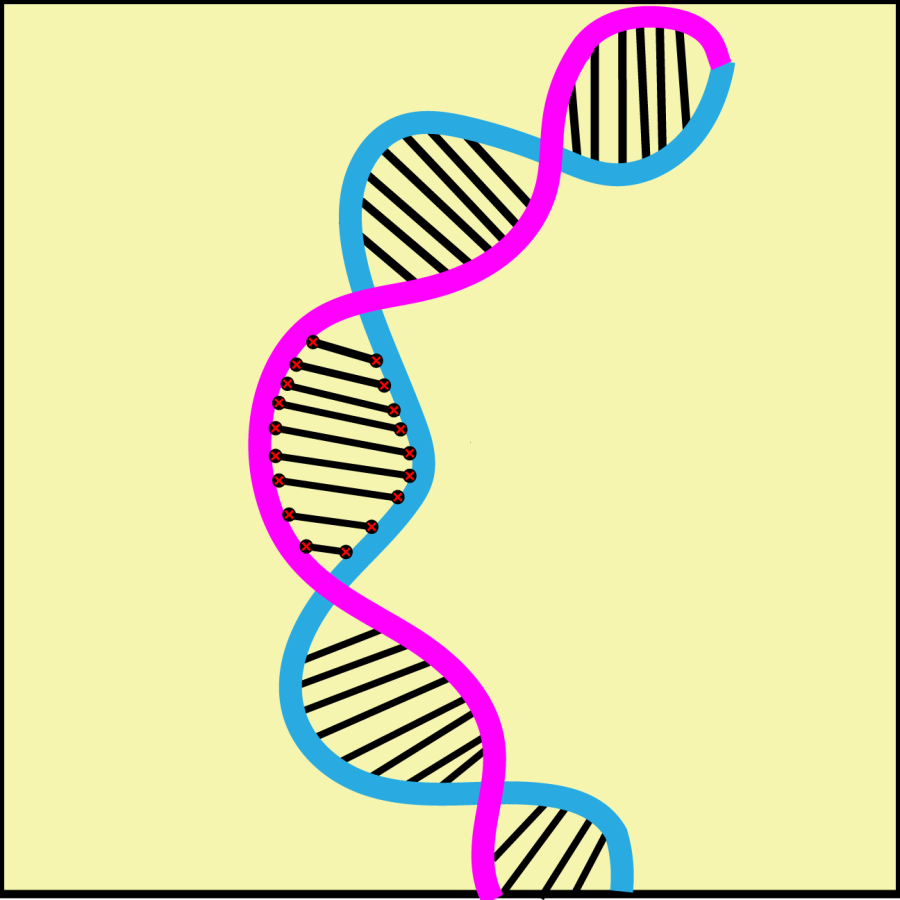Murderers are a product of their environment and a predisposition to a violence gene
March 7, 2023
In the mini-series “Defending Jacob,” murder genes were used as evidence in criminal cases. A murder gene is a term used for a link or similarity in the genes of criminals to see if there is something in their DNA that made them more likely to kill. But do these really exist? To what extent can we truly determine whether some people are more predisposed to act in certain ways compared to others based on their genetics?
In an interview with the Los Angeles Times, Dr. Carrie Bearden, a professor at UCLA’s Department of Psychiatry & Biobehavioral Sciences, said, “there is no such thing as a ‘murder gene.’” Experts argue there is no single “gene” that can predict if an individual will commit a crime or not. As a topic of heavy debate among the science community, there is not yet one concrete answer, but I have strong reason to believe that murder genes are not the sole answer to violent behavior. Often overlooked, it is clear genetics and the environment play a stronger role.
There are many genetic factors associated with criminal behavior. Traits like psychopathy, neuroticism, impulsivity, manipulation and a limited capacity for empathy make someone more susceptible to committing violent acts; people who are genetic carriers of these traits are likely to display violent behavior.
In a paper for the Berkeley Scientific Journal, writer and researcher Anusha Subramanian notes these specific genes include “MAOA, COMT, SCL6A4, and DRD4; which have been associated with aggression modulation.” These genes can partially explain aggressive behavior.
Dutch geneticist Han Brunner conducted a breakthrough study in 1933 that concluded the low-acting version of monoamine oxidase A, or MAOA, was associated with violence in humans. MAOA, also known as the “warrior gene,” codes for the enzyme monoamine oxidase-A. This enzyme is responsible and involved in the removal and breakdown of the neurotransmitters serotonin, epinephrine, norepinephrine and dopamine. Signals transmitted by serotonin regulate mood, emotion, sleep and appetite, while epinephrine and norepinephrine control the body’s response to stress.
One of the most important things to note about this research is the pivotal role of the environment, which can influence how individuals display traits. Research on this topic reveals that people who have experienced childhood trauma or abuse and hold these specific violent genes in their DNA are much more likely to behave violently than others without childhood trauma.
Brunner’s study was the first to have real results that matched the hypothesis and opened the gates of this subject to other scientists. Past cases related to research regarding murder genes were never approved, as no one believed there was any correlation between these areas, so they did not want to invest. The results consistently displayed there was no particular gene responsible for violent behavior. Furthermore, there was no link between aggression and genetics until Brunner proved otherwise, and it was with his study that further investigation into this field could be conducted.
However, there were a few issues that arose from the study. It failed to fully establish that the MAOA gene moderated the relationship between an abusive childhood and antisocial behavior. “Additionally, most research in this field has been conducted on a sample of only males. Thus, research on the MAOA gene has been fraught with controversy,” explains Brett C. Haberstick, a Senior Research Associate in the Institute for Behavioural Genetics at the University of Colorado, Boulder.
In another study, Professor Jari Tiihonen from Karolinska Institutet, Department of Clinical Neuroscience analyzed the genes of 895 Finnish criminals. The study categorized each criminal as violent or non-violent based on their offenses. The association between genes and aggressive behavior was strongest for the 78 criminals who fit the extremely violent offender profile.
The group he studied “had committed a total of 1,154 murders, manslaughters, attempted homicides or batteries.” The study concluded that all the offenders carried a low-activity version of the MAOA gene, which was a pivotal discovery and moved this investigation forward.
The results from the two independent cohorts of Finnish prisoners revealed that the low activity genotype MAOA, which “contributed to a low dopamine turnover rate,” as well as the CDH13 gene (coding for neuronal membrane adhesion protein), are both associated with extremely violent behavior. At least 10 of the prisoners who had any of these genes committed homicides, attempted homicides or batteries.
In summary, a genetic tendency towards violence put together with an abusive childhood is a killer combination. It is unequivocally clear that murderers are both born and made through their genes and their environment. There is some common genetic makeup amongst killers, such as the presence of the MAOA and CDH13 genes; however, a single gene is not convincing enough evidence to prove an individual is a murderer.
Sahej Anand is a first-year business administration major. She can be reached at anand.sah@northeastern.edu.







